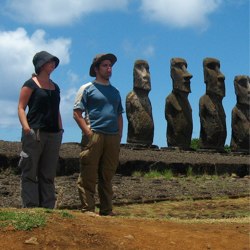Unraveling the Mysteries of Easter Island

Introduction
Easter Island, known as Rapa Nui, is one of the most remote inhabited islands in the world, located in the southeastern Pacific Ocean. Famous for its enormous stone statues, called moai, the island’s unique history and culture have fascinated scholars, tourists, and historians alike. Understanding Easter Island is essential not only for appreciating its cultural heritage but also for learning lessons about sustainability and resource management.
Historical Significance
Discovered by European explorers in 1722, Easter Island boasts a complex Polynesian history that dates back over a thousand years. The island’s inhabitants developed a vibrant culture, exemplified by the construction of almost 900 moai statues, which represent ancestral figures. These monumental sculptures reflect the islanders’ beliefs and socio-political structure.
However, the island also presents a tale of environmental challenges. The deforestation that occurred, primarily due to human activity, led to significant ecological changes that contributed to societal decline. This situation serves as a cautionary tale about the balance between cultural endeavors and environmental sustainability.
Current Events and Tourism
Recent years have seen a surge in interest toward Easter Island, particularly in the wake of the COVID-19 pandemic. As travel restrictions have eased, the island has relaunched its tourism program while implementing measures to protect its delicate ecosystem and cultural sites. In 2023, local officials announced new guidelines aimed at sustainable tourism, focusing on education and conservation. Visitors are urged to follow responsible tourism practices, ensuring the preservation of Easter Island’s heritage for generations to come.
Conclusion
Easter Island remains a site of significant anthropological importance and serves as a powerful reminder of the impact of human activity on the environment. As tourism continues to grow, the island’s community is advocating for sustainable practices to ensure that its cultural legacy and natural beauty endure. For readers and potential travelers, understanding the history and significance of Easter Island is crucial, not only for appreciation but also for engaging in responsible and conscientious travel.









